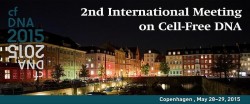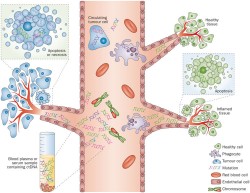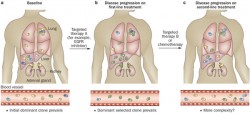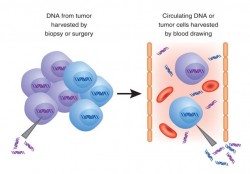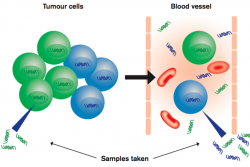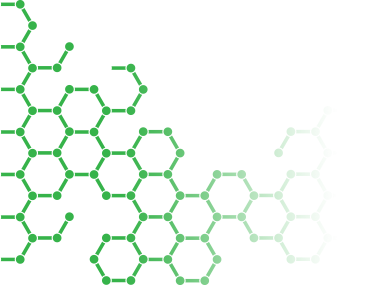2015/09/26
未來cfDNA有專用採血管 保存期限大躍進
Sample-to-Sequence Triple Play
Sequence ctcDNA (whole cells), cfDNA (cell fragments), and Germline DNA from a Single Blood Sample
The advent of next-generation sequencing (NGS) has quickened the pace of discovery in oncology by making available an entire class of biomarkers that are the result of mutation analysis and are biologically tumor-specific. These genetic mutations drive virtually all forms of cancer.
Mutation analysis has traditionally been performed only on tissue biopsy material. However, many tumors are difficult to biopsy, are accessible only using fine needle aspirates (producing little usable material), or are located either in unknown sites or in sites that are challenging and risky to access. Radiographic approaches are often insensitive to changes in tumor response and the recovery of additional biopsy material assumes we can effectively identify the most important sample of the disease for analysis. The traditional methods for tumor assessment fail to capture the heterogeneity of the disease, especially during progression.
The LiquidBiopsy® can solve these problems. It is a supplementary biopsy mechanism that samples different parts of the disease from traditional surgical biopsy, has none of the associated side effects or risks being just a blood draw, can be repeated as needed for effective monitoring, and samples the part of the tumor that is associated with metastatic events.
As a more detailed picture of the mutations that drive oncogenesis emerges, new avenues for researchers, clinicians, and drug developers have opened up.

ULTRA-HIGH SAMPLE PURITY
The LiquidBiopsy platform provides reliable access to rare populations of cancer cells in whole blood, with the ability to detect as few as 1 target cell per mL (billion). LiquidBiopsy is capable of concurrently sampling DNA from circulating tumor cells as well as cell-free DNA (cfDNA) from a normal blood draw.
DIFFERENTIATED TECHNOLOGY
The LiquidBiopsy automated platform and its patented immunomagnetic tumor cell isolation flow chip were developed specifically to support sequencing of rare events from complex backgrounds. The LiquidBiopsy workflow is further differentiated by custom bioinformatics to handle next-gen sequencing and other downstream analysis processes.
The LiquidBiopsy® + Ion Torrent PGM™ Workflow
The combination of Ion Torrent PGM™ workflow and LiquidBiopsy rare cell enrichment technology provides the industry’s only commercially available sample-to-genomic data solution for analyzing circulating tumor cells and cell-free DNA from a single blood draw.

Comprehensive and distributable workflow for ctcDNA, cfDNA and germline sequencing with optional CTC enumeration and highly multiplexed genomic data.
<48 hour turn-around, Variant detection: 1% sensitivity, CTC enrichment: 1 in a billion cells
The LiquidBiopsy’s high CTC purity rate, in conjunction with the Ion Torrent PGM™’s capability to accurately sequence limiting amounts of NDA, enables multiplexed interrogation on one Ion 318™ sequencing chip from a single blood sample. The workflow also incorporates the Ion Torrent Chef System™ for automated sample prep and the Ion Torrent AmpliSeq™ Cancer Hot Spot Panel v2, which targets about 2,800 specific gene mutations for sequencing prior to final analysis with the Ion Torrent Reporter™ software.
This comprehensive, two-day workflow enables genomic research reporting data on CTCs, cell-free DNA (cfDNA), and germline whole-blood cells from a single blood sample in a single cycle.
Workflow components
- LiquidBiopsy Blood Collection Kit:
Collect and stabilize whole-blood samples for up to 96 hours. The provided fixative enables ambient temperature storage and shipping, and an easy-to-use protocol helps you achieve uniform results in your analysis. - LiquidBiopsy Instrument:
Automate isolation of CTC cells. The instrument automates flow cell priming, blood sample loading, target cell isolation, and immunofluorescent labeling of captured cells on the flow chip. - Ion AmpliSeq™ technology:
Survey hotspot regions of oncogenes and tumor suppressor genes. Low-input DNA capability is well-suited to rare cell research, and predesigned research panels allow you to focus on data generation and analysis. - Ion 318™ Chip:
Save time. Pool cfDNA, germline, and CTC nucleic acids on one Ion 318™ Chip. - Ion PGM™ Sequencer:
Interrogate specific regions with high specificity and sensitivity. The Ion PGM™ Sequencer helps increase cost-effectiveness of studies and improves the depth of coverage leading to better detection of variants.




